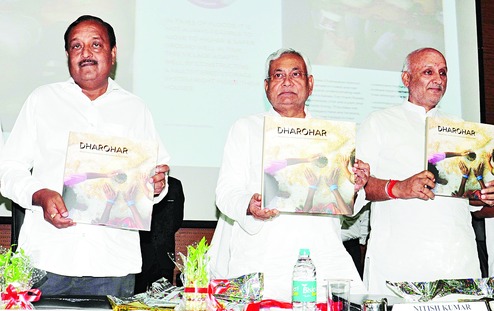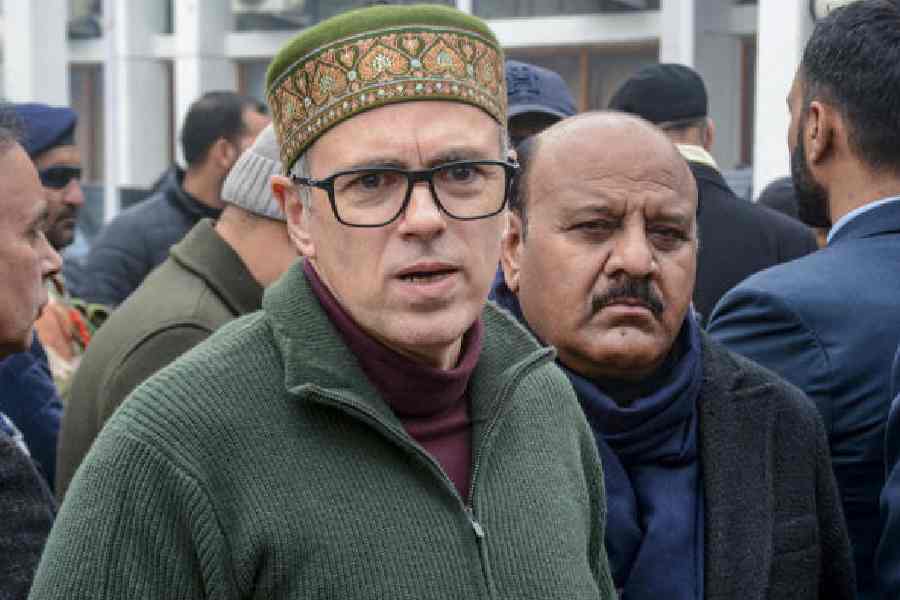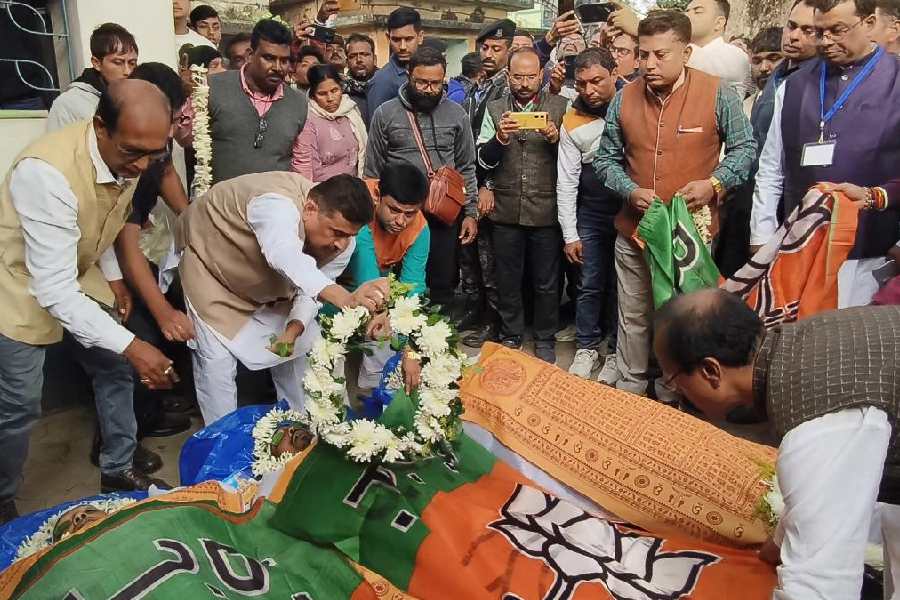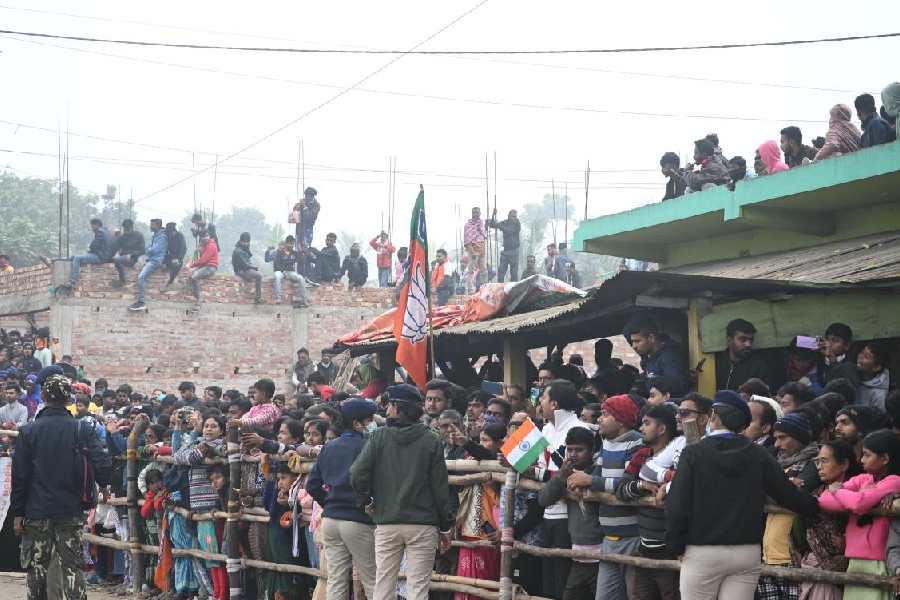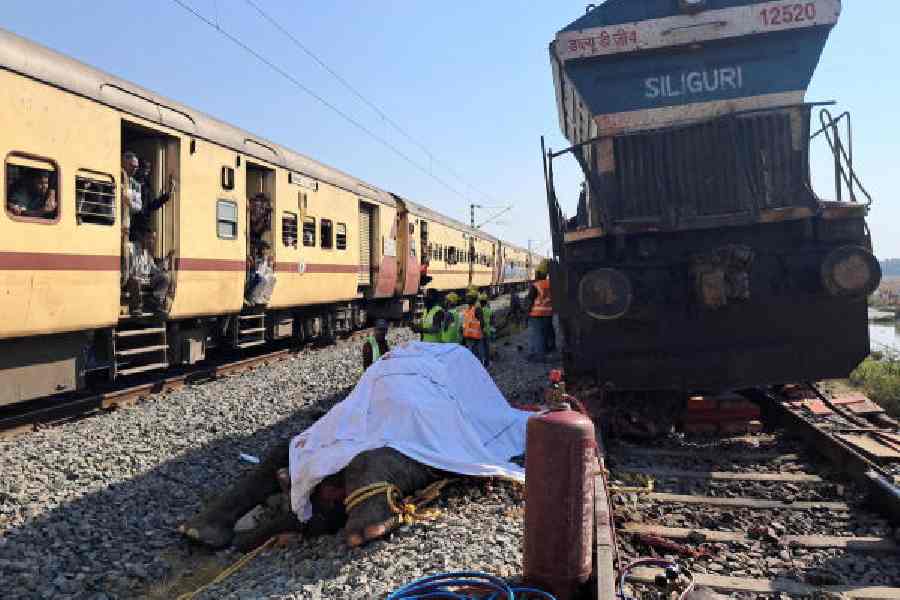
Patna, July 21: Chief minister Nitish Kumar today instructed officials concerned to bring an early warning system for lightning, which killed 156 people in Bihar this year, from Andhra Pradesh.
He was speaking at the inaugural session of a two-day workshop organised by the disaster management department on "State Platform for Disaster Risk Reduction".
Pointing at principal disaster management secretary Pratyaya Amrit at Adhiveshan Bhavan, Nitish said: "I have come to know that Andhra Pradesh is working on a technology that warns, half-an-hour in advance, where lightning is going to strike. If it's successful in Andhra Pradesh, why can't we implement it in Bihar? If we come to know where a lightning will strike half-an-hour in advance, we can easily inform the respective district magistrate, block development officer and circle officers and the situation could be handled accordingly."
"Within four to five minutes, the information can be shared with officials at every level," Nitish further said. "I will ask the minister and Pratyaya Amrit, who are sitting here, not to delay. If the technology is successful in Andhra, you people immediately bring it to Bihar as well. Do not worry. You do not need to go anywhere if it costs Rs 2 crore, Rs 3 crore or Rs 4 crore. Money for the technology will be allotted from the Chief Minister's Relief Fund."
The packed hall broke into applause.
Andhra Pradesh uses Total Lightning Network, provided by US-based Earth Networks, to alert people about imminent lightning strikes up to around 30 minutes in advance.
Earth Networks claims to provide the most extensive and advanced lightning network across the globe with ability to monitor in-cloud lightning to enable forecasters generate faster, localised storm and lightning alerts and also warn of other forms of severe weather such as heavy rain and high winds.
Nitish also released a book, Dharohar, explaining 16 traditional methods used by people in Bihar for early alerts of weather developments.
The workshop was organised to discuss the aspects related to disaster management and risk reduction in light of the Sendai framework on disaster reduction (2015-2030). Several experts from abroad were present at the conference. Experts shared details of the steps being taken in their respective areas for disaster risk reduction.
Sendai Framework for Disaster Risk Reduction is an international document adopted by UN member states in 2015 during a global conference on disaster risk reduction held at Sendai in Japan.
The framework has four main parts - developing an understanding about disaster risk, steps needed to strengthen the mechanism to deal with disaster, steps to minimise the adverse impact of natural disasters and also to prepare for fastest and most effective means of response in the event of a natural disaster.
Amrit stressed that Bihar is the only state in India which has prepared a roadmap for disaster risk reduction.
The experts included M. Asadur Rahman, chief field officer, Unicef Bihar, David Molden, director-general of International Centre for Integrated Mountain Development, Valerie Bemo, representative of Bill and Melinda Gates Foundation (BMGF).
On Saturday too, several experts, among them member-secretary of Asian Development Research Institute Shaibal Gupta, Carlos Mejia from BMGF and Tony Castleman, representative of South Asia, Catholic Relief Services, will take part in the conference.
Officials from 27 state government departments that coordinate with the disaster management department were also present at the workshop.
Nitish stressed that if the technology benefits the people of Bihar, it would be great. "We can save the lives of hundreds of people. No one claims to control natural disaster because it is out of human control. But we can at least work towards this step," said Nitish, adding that all these steps would take the real shape of risk reduction.

